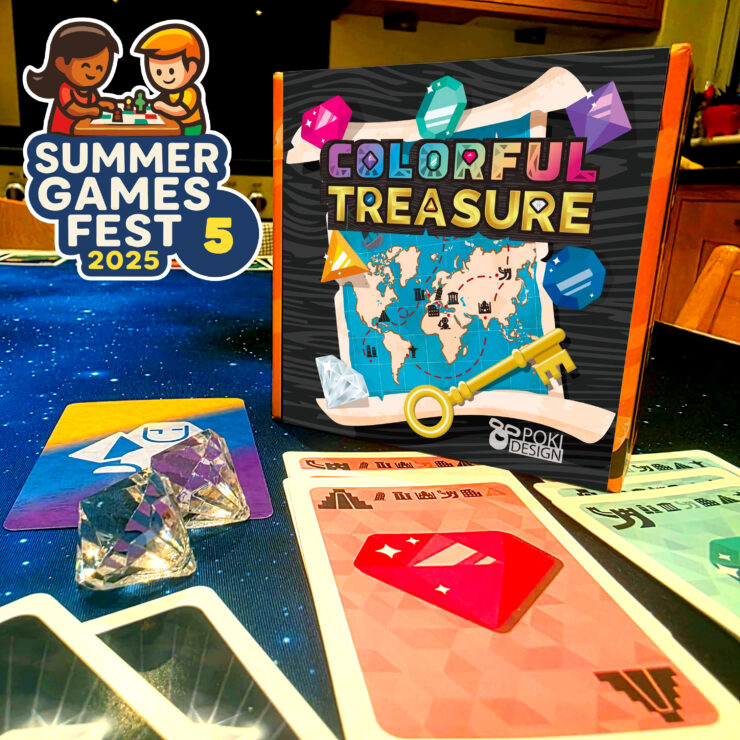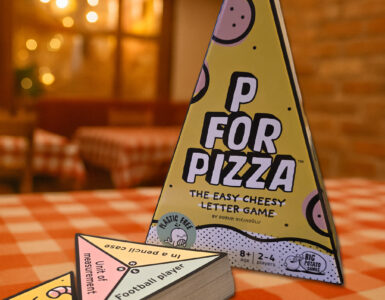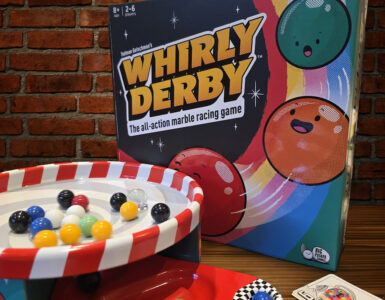When it comes to relatively simple games, I can usually tell when I’m reading the rules and setting things up whether I’m going to enjoy it or not.
Colorful Treasure, on the other hand, is a game that I didn’t think much of while setting it up. But when we actually got around to playing it, I really enjoyed it. It turns out it’s a really good, actually quite unique, memory and set collection game.
While the game comes in a really small package, it’s definitely not a travel game. You set it up by laying all the cards out in a massive five by ten grid, with each of the ten different wonders forming a column, their cards shuffled into random order. Each column also has a gem, and each column also has either a key or a treasure chest.
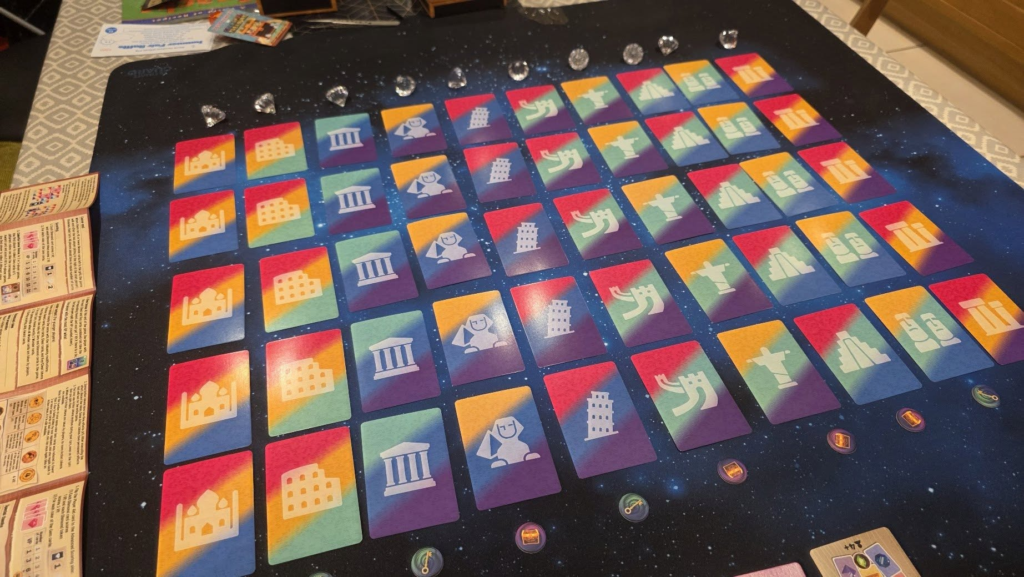
What you’re essentially trying to do is collect sets of gems. Sets of different gems are worth more than just having lots of different types, and you’re also trying to gather diamonds, which are worth points.
On your turn, you can flip over two cards – or three if you want to push your luck – and you can then take either diamonds, which give you points, or you can take one or more gems, depending on how many of a particular colour you revealed. However, if you reveal a chest or a key, you must take that chest or key, which is where the push-your-luck element comes in. You might already have flipped something you really want, and you could risk going for even more, but if you reveal a chest or key, you’ll have to take it.
Chests and keys are completely useless on their own, but if you collect a pair of chests or a pair of keys, you can steal a gem or diamond from another player. It’s definitely the slowest way of scoring points, though.
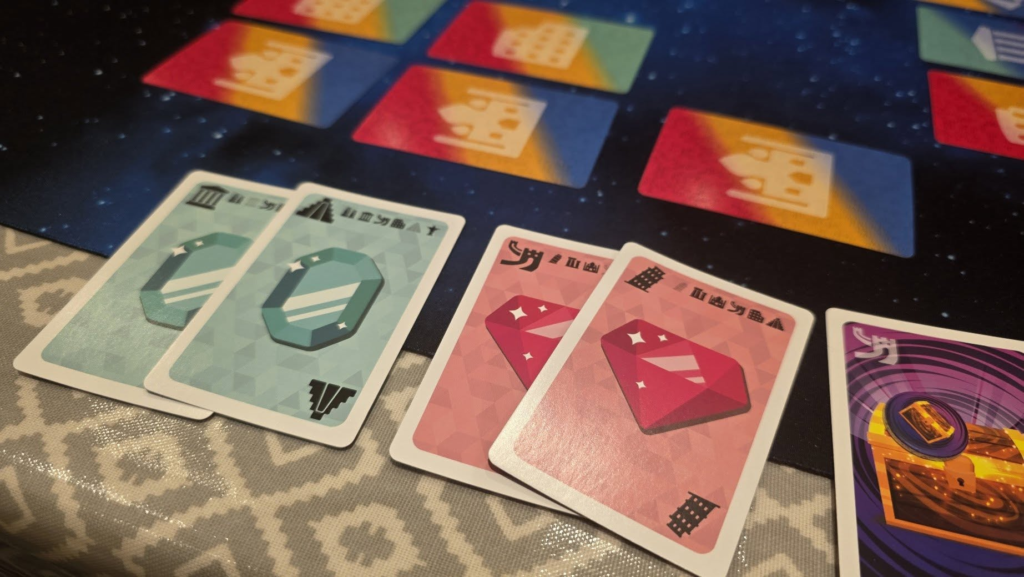
You keep playing until there are only ten cards left on the grid, which triggers the final turn. You then count up your points from gems and diamonds. There are also bonus cards that reward you in other ways. The first player to collect cards from eight different wonders gains five points. The first player to collect five or six different gem colours (depending on player count) gets six points. At the end of the game, the player with the most chests and keys gets seven points.
There are also advanced rules involving action tokens, which you earn after collecting three gems of the same colour. These give you extra powers, such as peeking at unrevealed cards, revealing a fourth card, collecting extra points for your gem sets, or acting as a wild gem colour to boost your set.
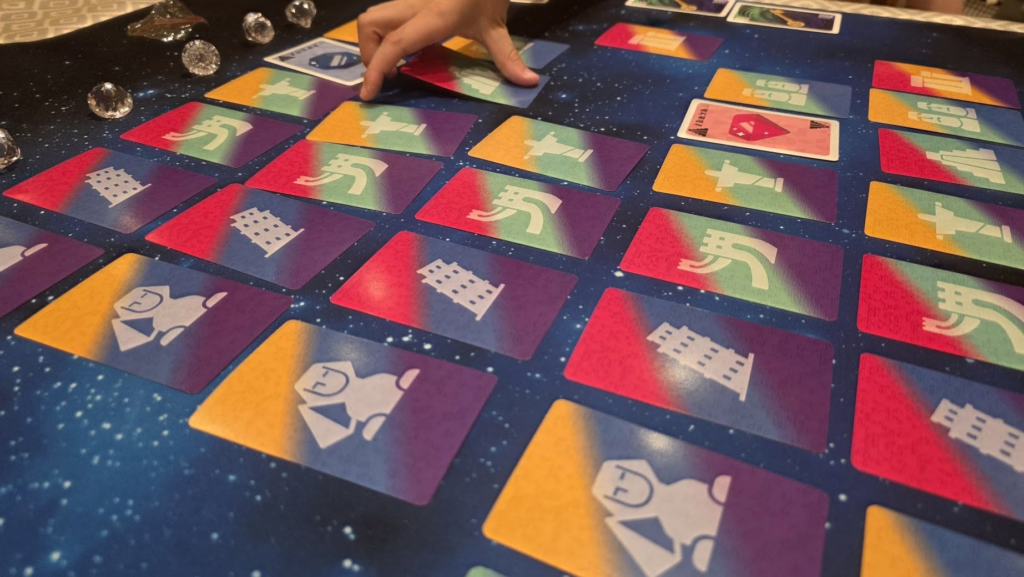
We really enjoyed this, which is unusual considering how little I thought of it when I first set it up. I also didn’t initially grasp how much of a difference the push-your-luck element makes – it’s a really nice addition. I really like that style of gameplay, and here it’s not overpowering. A lot of the rules seem very intentionally designed to keep things balanced. After a few plays, it did feel like going for gem colours was generally more powerful than focusing on diamonds, but there are definitely multiple ways to win.
What I really liked is that it isn’t complex. Most of the mechanics are ones I’ve seen before, but the way it all comes together is actually quite unique. I can absolutely see this one coming out regularly, especially on family game nights – I think it has a lot of multi-age appeal.
While it’s technically an import from Taiwan, it comes with English rules, I bought my copy in the UK, and it does seem to be fairly easy to find.
A real gem. A real diamond in the rough (insert more puns here). An unexpected treat, and something I definitely recommend.


